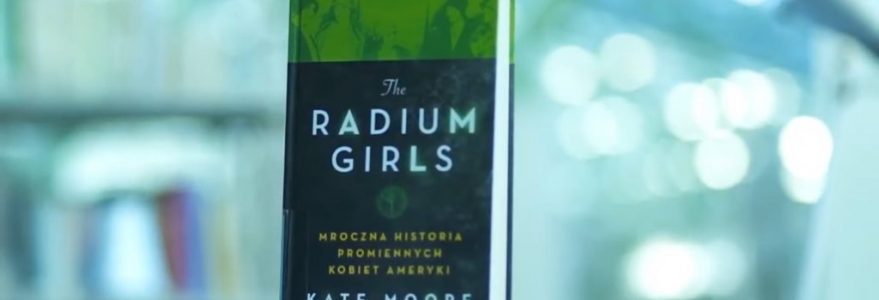A combination of the most expensive substance in the world, water and glue, made miraculous paint that glowed in the dark. Girls were painting dials with it. To do this precisely, they applied the rule: “lip, dip, paint”. And so, overnight, unconsciously, they were eating radioactive radium. As part of the series “Read with UW”, we would like to present the book by Kate Moor: “The Radium Girls: The Dark Story of America’s Shining Women”, describing one of the biggest U.S. scandals of the 1920s.
“It is a story full of pain and injustice that touches the heart but also gives food for thought because the topic of women’s rights is still relevant all over the world,” emphasises Joanna Chełstowska, head of the Selection and Control Department at the University of Warsaw Library.
In 1917, the Radium Dial watch factory was opened in Orange, New Jersey, with its dials glowing in the dark. Painting watch elements required precise and gentle movements. Therefore, young girls, starting from the age of 14, are employed there. The watches they produce go to soldiers fighting on the front lines of World War I.
Radium for teeth and cockroaches
This miraculous component of the emulsion responsible for shining was radium. It was the most expensive substance in the world. Its market price per gram was $120,000 at that time. Today, it is the equivalent of more than 2 million.
The majority of the population believed that radium had only a positive impact. Journalists were writing about it in newspapers and magazines. Also, it was the advertising message on the product packaging and the topic of Broadway’s performances.
The radium craze reached its peak when Maria Skłodowska-Curie visited the United States in 1921. “It was an exclusive product that the producers tried to add literally to everything. It was fashionable to put it on the packaging of various products: toothpaste, soaps, creams and even chemicals against cockroaches,” says Joanna Chełstowska.
Lip, dip, paint
Working in the watch factory was very well paid. Wages exceeded a worker’s salary threefold. The girls who painted the dials led an elite life, sometimes providing for whole families. According to the instructions given by the female employees: “lip, dip, paint”, the brushes had to be put in the mouth first, to sharpen the end. Unaware of the dangers, they were eating the deadly substance every day.
“In 1921, the first girl from the factory goes to the dentist. Since then, the disease is progressing rapidly. Families were wringing their hands, and doctors could not find a cause. A long court battle against the corporation begins. The company does not want help or pay compensation, and lawyers do not want to deal with the business shark,” says the librarian.
“It is a multidimensional story. Constantly proving the truth and persuading the agitated public opinion made me feel enormous anger while reading this book,” admits Joanna Chełstowska.
“Reading, as opposed to radium, is a panacea for me. It is a time slower that is extremely necessary in today’s busy world,” stresses Chełstowska.
In the University of Warsaw Library, you will find other fascinating publications about women. Please, feel invited to explore its collections.



